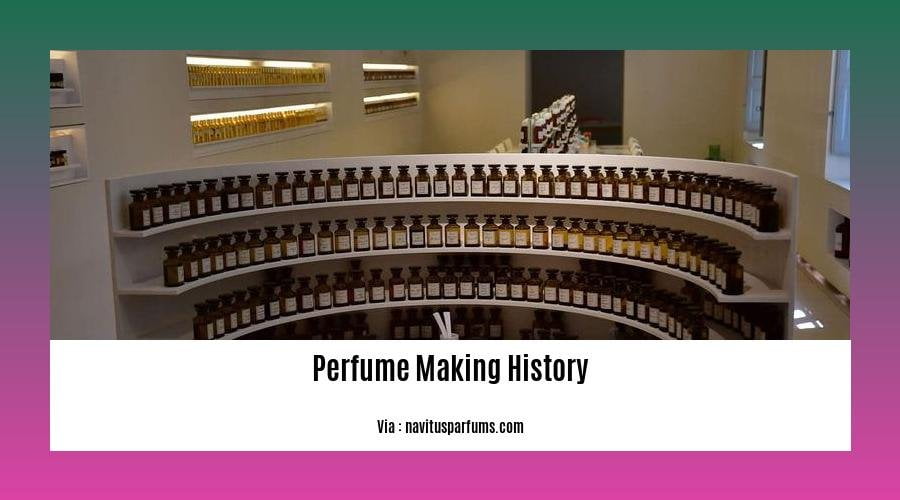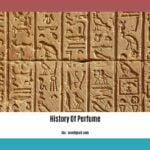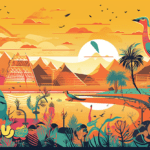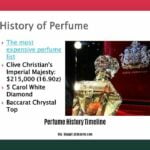Embark on an olfactory odyssey through the alluring tapestry of perfume making history in [The Alluring Tapestry of Perfume Making History: An Olfactory Odyssey]. Delve into the fragrant annals of this ancient craft, tracing its captivating journey from humble beginnings to modern-day artistry.
Key Takeaways:
- Perfume-making is an ancient practice with origins in Mesopotamia, Egypt, India, and China.
- Romans and Muslims refined the art, developing new techniques and ingredients.
- Ancient Egyptians had skilled perfumers who created fragrances for religious and personal use.
- Greeks and Romans expanded the use of perfume and introduced new methods and materials.
- Romans incorporated perfume into various aspects of daily life, such as bathing, beauty rituals, and religious ceremonies.
Perfume Making History:
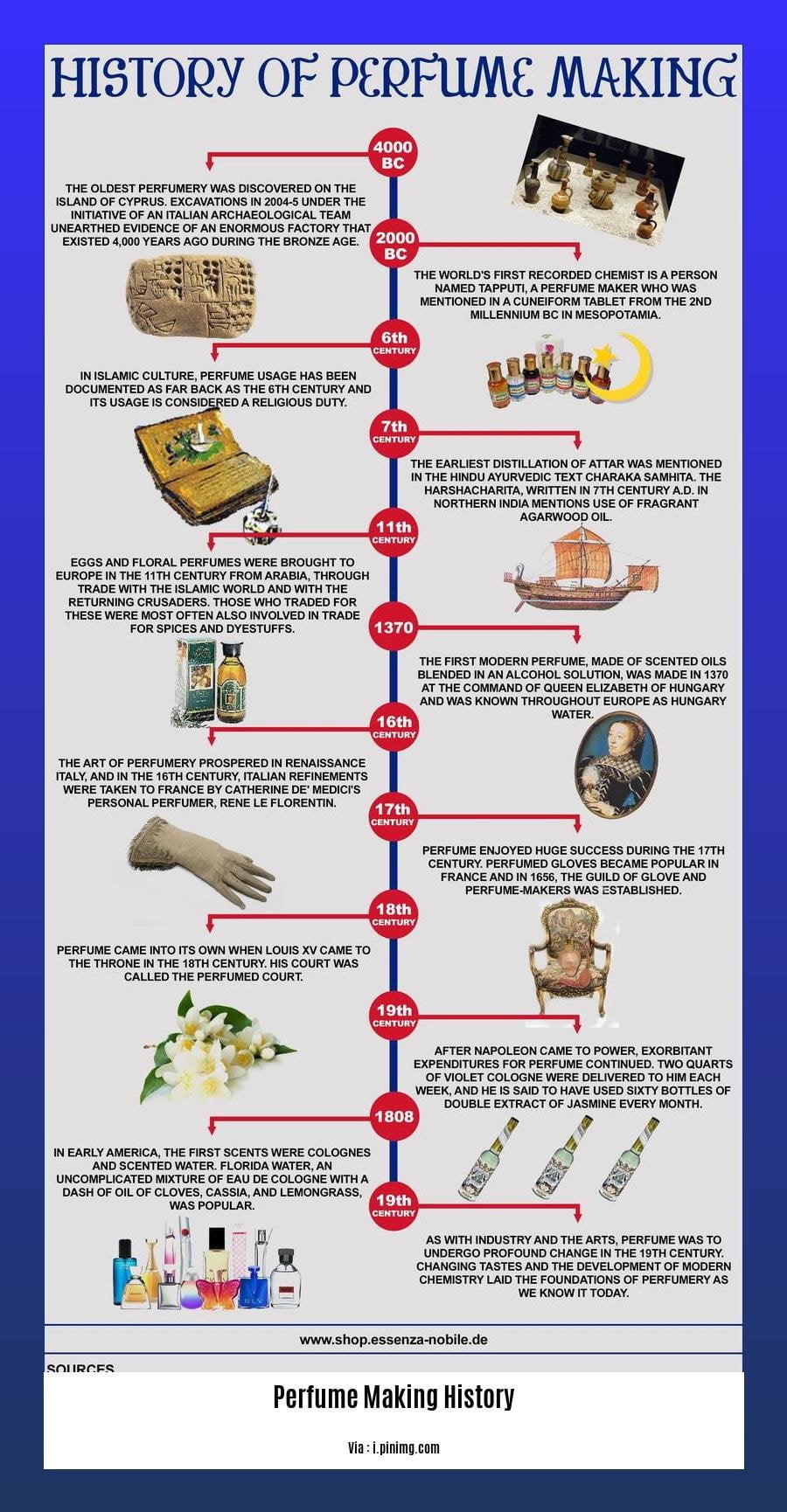
Ancient Origins:
Embark on an aromatic journey through perfume making history, where fragrant artistry has captivated civilizations for millennia. Its roots trace back to ancient Egypt, where perfumers commanded respect, crafting divine scents that graced temples and adorned royalty.
Cultural Exchange and Refinement:
Greeks and Romans embraced perfume’s allure, infusing their baths, garments, and social gatherings with exotic fragrances. The Romans, masters of trade, introduced new ingredients and techniques, expanding the olfactory palette.
Medieval Alchemy and Distillation:
Alchemists emerged as pioneers in perfume making history, unlocking the secrets of distillation. They harnessed alembics to extract concentrated essences, giving birth to long-lasting and potent scents.
Renaissance Revival and Royal Patronage:
Renaissance courts became vibrant hubs of perfumery, where skilled artisans catered to the whims of nobility. Florence and Venice emerged as epicenters, their perfumers blending tradition with innovation.
19th Century Innovations and Synthetic Fragrances:
The 19th century heralded a transformative era in perfume making history. Chemical advances enabled the creation of synthetic fragrances, broadening the spectrum of scents and making them more accessible.
20th Century Modernization:
Perfumery entered a new chapter in the 20th century, as science and technology became its allies. Gas chromatography and mass spectrometry empowered perfumers to analyze and recreate complex aromas, ushering in an era of olfactory masterpieces.
Conclusion:
Perfume making history is a testament to the human pursuit of fragrance and artistry. From sacred offerings to expressions of identity, perfume has played an enchanting role in cultures worldwide. Its evolution is a fragrant symphony, harmonizing tradition with innovation, captivating our senses and leaving an indelible mark on our collective olfactory experience.
Discover the captivating history of perfume, tracing its evolution through centuries of human civilization history of perfume. Explore a comprehensive timeline of perfume history, showcasing the key moments and innovations that shaped this alluring art form perfume history timeline. Delve into the fragrance origin, uncovering the fascinating stories behind the world’s most captivating scents fragrance origin.
Medieval Alchemy and Distillation
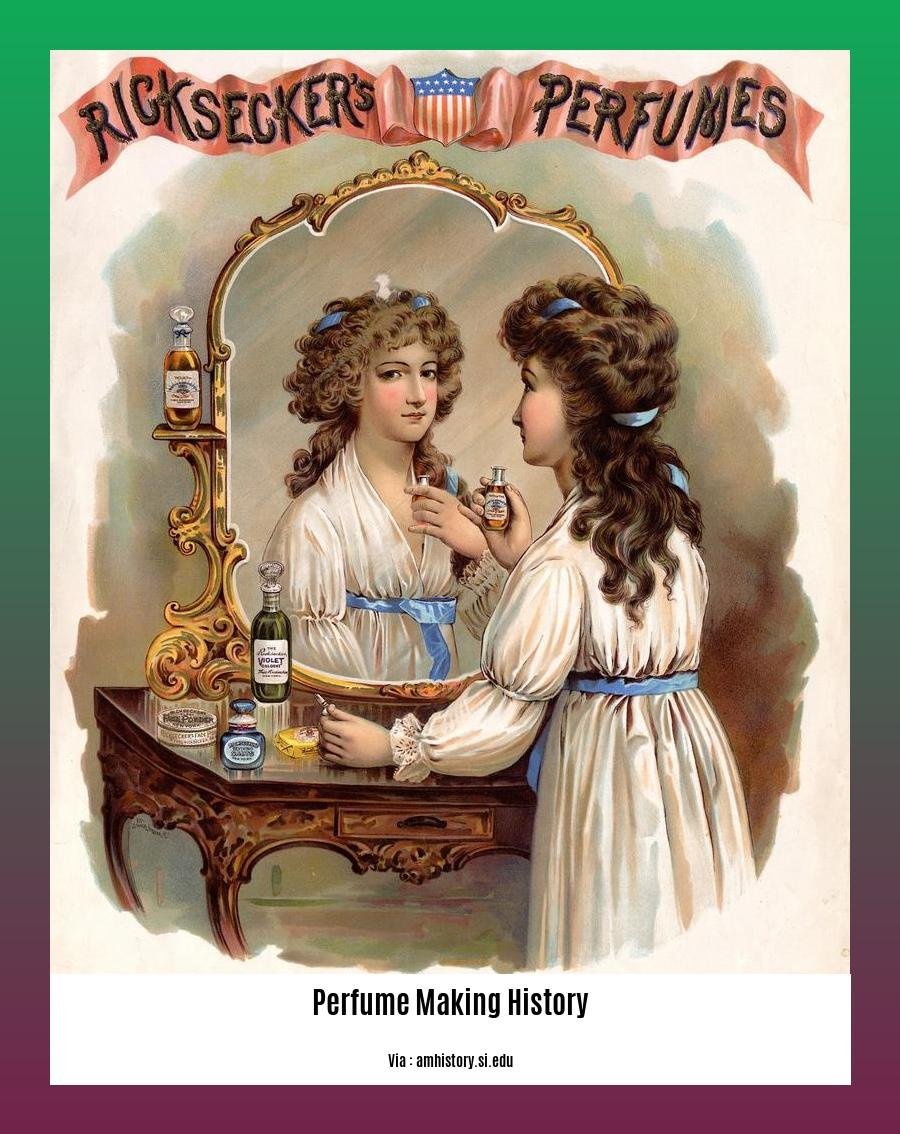
The medieval ages witnessed a transformative chapter in the history of perfumery, spearheaded by the ingenuity of alchemists. Medieval alchemy and distillation techniques revolutionized the art of scent extraction, leading to the creation of more potent and long-lasting fragrances.
Key Takeaways:
- Medieval alchemists perfected steam distillation, a process that separates volatile compounds from plant materials.
- Alembics, specialized glassware, enabled efficient distillation, concentrating fragrant essences.
- Distillation marked a breakthrough, allowing perfumers to capture the true essence of botanicals.
Innovations and Influences:
- Iranian scientists made significant contributions to perfume production during the Islamic era.
- Distillation techniques spread beyond the Middle East, influencing alchemists and perfumers across Europe.
- The advancements in distillation set the foundation for the sophisticated perfumery practices we enjoy today.
Most Relevant URL Source:
Renaissance Revival and Royal Patronage
During the Renaissance, a period of cultural rebirth, there was a renewed interest in classical arts and sciences, including perfumery. Italy became a hub for this fragrant revival, with city-states like Florence and Venice emerging as centers of production.
Royal Allure:
The Renaissance revival was closely intertwined with royal patronage. Opulent courts across Europe commissioned bespoke fragrances, elevating perfume to a symbol of status and luxury. Royal perfumers experimented with exotic ingredients and techniques to create exquisite scents that reflected their patrons’ refined tastes.
This patronage fostered a golden age of perfumery, where artisans pushed the boundaries of their craft. The Medici family of Florence, known for their lavish patronage of the arts, were avid collectors of rare perfumes. Catherine de’ Medici, Queen of France, brought Italian perfumers to her court, introducing French royalty to the latest fragrant creations.
Aromatic Legacy:
The Renaissance revival left an enduring legacy on perfumery. The techniques and innovations developed during this period laid the foundation for modern perfume making. The association between perfume and nobility continues to this day, with many luxury brands tracing their roots to the Renaissance era.
Key Takeaways:
- The Renaissance witnessed a resurgence of interest in perfumery, driven by the rediscovery of classical texts and royal patronage.
- Italian city-states became centers of perfume production, with Florence and Venice leading the way.
- Royal courts commissioned custom fragrances, establishing a link between perfume and opulence.
- The Renaissance era fostered experimentation and innovation, advancing the art of perfumery.
- The legacy of the Renaissance revival continues to shape modern perfume making.
Most Relevant URL Source:
- Perfume in the Renaissance
19th Century Innovations and 20th Century Modern Perfumery
The 19th century marked a significant turning point in the development of perfumery. Technological advancements led to the rise of synthetic fragrances, making perfumes more affordable and accessible to a wider audience. One notable invention was the creation of coumarin, an artificial compound that mimics the scent of vanilla. This discovery opened up new possibilities for perfumers to create scents inspired by exotic locales.
The 20th century brought further modernization to the perfume industry. Gas chromatography and mass spectrometry allowed perfumers to analyze and recreate complex natural scents with greater precision. This led to the development of new and innovative fragrances that continue to captivate our senses today.
Key Takeaways:
- Synthetic fragrances: The development of synthetic fragrances in the 19th century made perfumes more accessible and affordable.
- Coumarin: The creation of coumarin allowed perfumers to create new scents inspired by exotic locales.
- Gas chromatography and mass spectrometry: These technologies enabled perfumers to analyze and recreate complex natural scents with greater precision in the 20th century.
Most Relevant URL Source:
- History of Perfume: the 19th century | Carrément Belle
FAQ
Q1: Where did perfumery originate?
A1: Perfumery has its roots in ancient civilizations such as Mesopotamia, Egypt, and the Indus Valley civilization.
Q2: Which ancient civilization made significant contributions to perfumery?
A2: Ancient Egypt was a hub of skilled perfumers who developed sophisticated techniques for fragrance extraction.
Q3: How did the Romans contribute to the evolution of perfumery?
A3: The Romans adopted and refined existing fragrance-making practices, using perfumes extensively in various aspects of life, including religious ceremonies and personal hygiene.
Q4: What role did alchemists play in the development of modern perfumery?
A4: Alchemists during the Middle Ages played a crucial role in developing distillation techniques that allowed for the efficient extraction of essential oils from plants, shaping modern perfumery practices.
Q5: When did perfumery become a commercialized industry?
A5: The 19th century marked the rise of commercial perfumery, with advances in technology enabling mass production and marketing strategies positioning perfumes as luxury products accessible to a wider audience.
- Sept 31 Myth: Unveiling Calendar Secrets - March 18, 2025
- How Long & Till December 18, 2025: Accurate Countdown Guide - March 18, 2025
- Discover Japanese Artists: A Complete History - March 18, 2025
